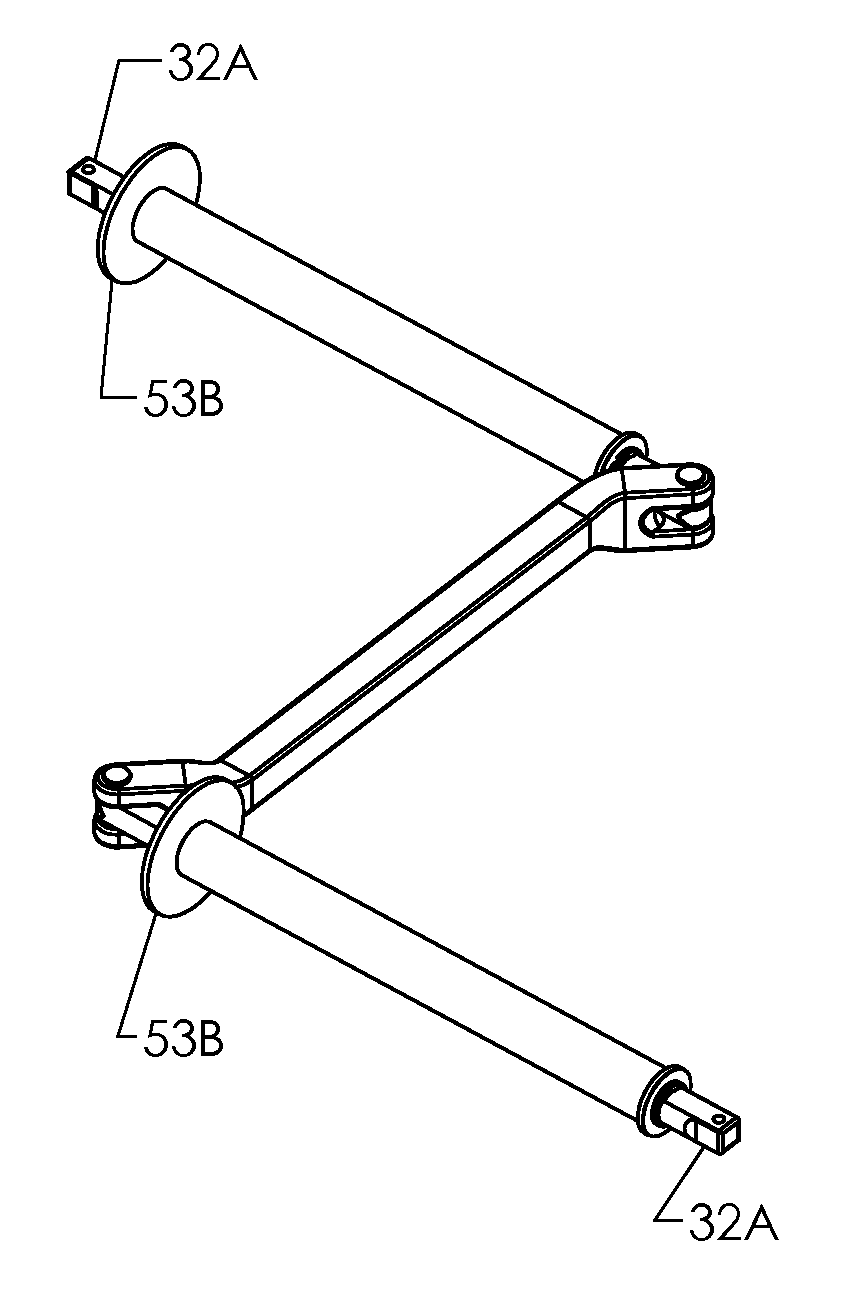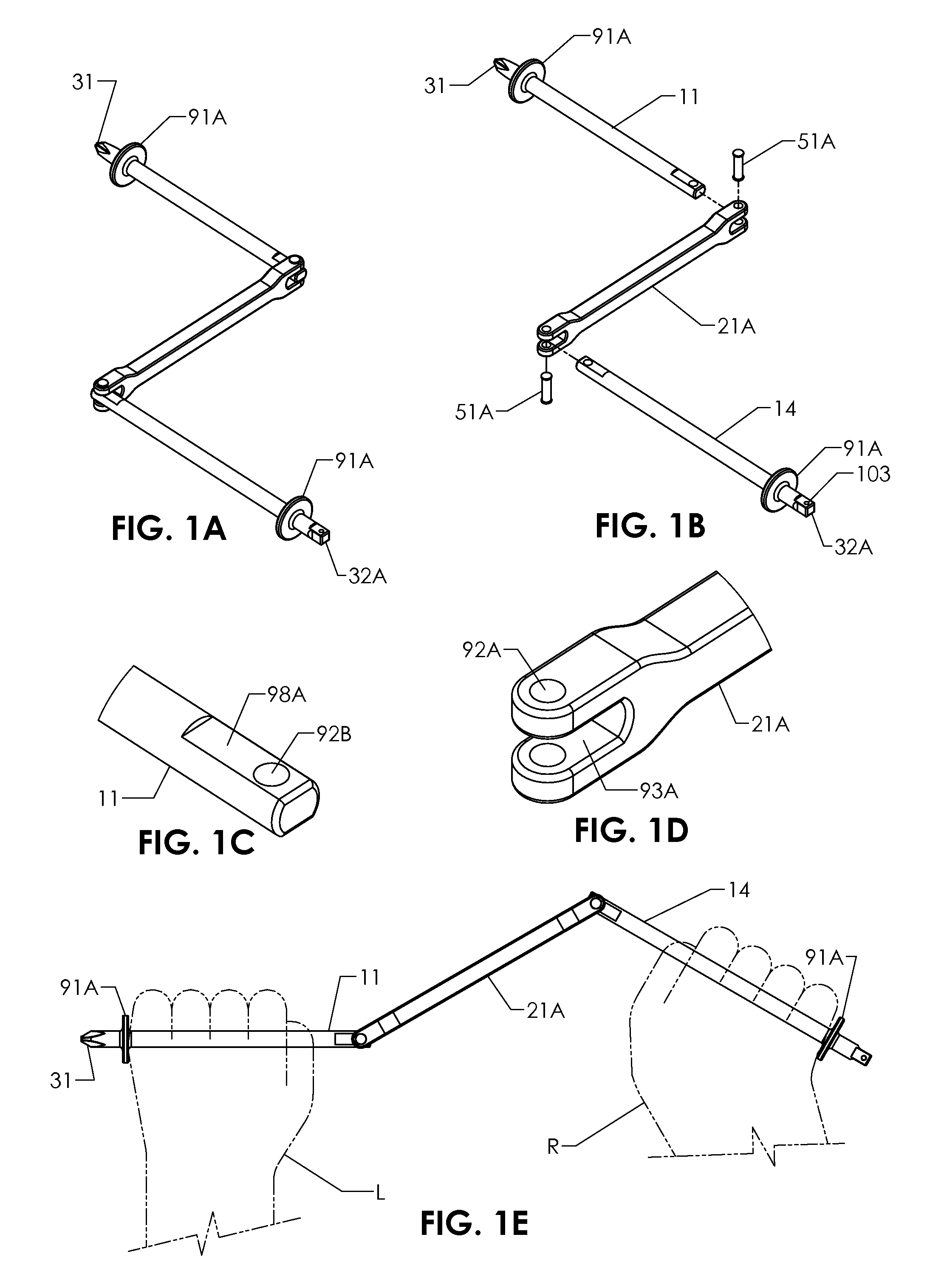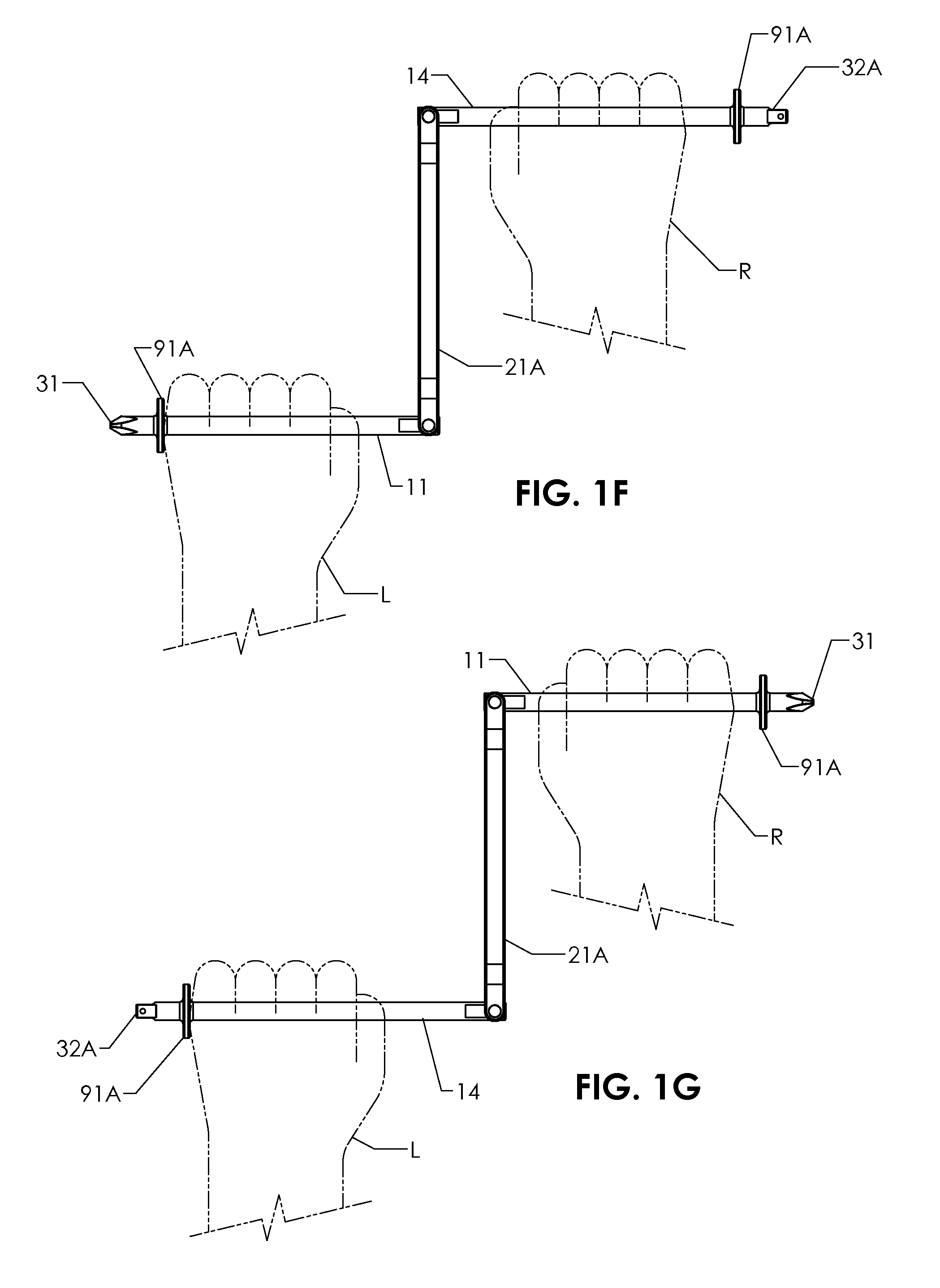Manual dual end rotary driver of Z configuration
a dual-end, rotary driver technology, applied in the direction of screwdrivers, wrenches, manufacturing tools, etc., can solve the problems of insufficient torque, too slow, too fast, etc., and achieve the effect of reducing the cost of manual operation, and improving the accuracy of manual operation
- Summary
- Abstract
- Description
- Claims
- Application Information
AI Technical Summary
Benefits of technology
Problems solved by technology
Method used
Image
Examples
fifth embodiment
[0301]The operation of the fifth embodiment is similar to that of the fourth embodiment. FIG. 5A shows the positions of the sliding thrust flanges 53B when using the end shown at upper left to impart rotary motion. To use one end as the output member, slide its thrust flange 53B to the outboard end. Grasp its rotating handle 41A with the left hand L with thumb pointing towards the pivot and side of hand against the sliding thrust flange 53B. On the other end to be used as the input, slide its thrust flange 53B inboard towards the pivot. Grasp its rotating handle 41A with the right hand R, thumb pointing towards the pivot and thumb side of hand up against the thrust flange 53B. Use the left hand to steady the output member and keep it in axial alignment with and engaged with the object to be rotated. Use the right hand to position the input member in the desired configuration for speed, cranking, max torque or anything in-between and create the rotary motion and torque. In the cranki...
sixth embodiment
[0309]The operation of the sixth embodiment is similar to that of the fifth embodiment except that each hand is not placed against a thrust flange. Each handle 41A can be gripped anywhere along its length and tightly enough to impart the desired axial force via the friction between hand and handle 41A. FIG. 6C shows the tool in cranking configuration and with the square drive 32A end imparting the rotary motion.
[0310]FIG. 6D shows that it can be very compactly folded for storage into a volume approximately ½″×1⅜″×7″.
[0311]This embodiment is simple and comfortable to use and reduces frictional losses. It folds very compactly. All the axial force must be transmitted by the friction of the users grip on the handles 41A.
DETAILED DESCRIPTION
Seventh Embodiment—FIGS. 7A-M
[0312]FIGS. 7A-7E show a seventh embodiment. This embodiment is similar to the sixth embodiment but is larger, and has identical input / outputs, adds a flange bushing 55 pressed into each end of a rotating handle 41B, and e...
seventh embodiment
[0320]The operation is the same as the sixth embodiment. This embodiment further reduces the energy lost to friction and allows the tool to be used with greater ease. The bushings or bearings also act as the wearing parts that can be replaced.
[0321]The removable ball detent pin 51D allows fast and easy changing of the input / outputs or the connecting member 22B. The connecting member 22B could be changed to a shorter one to emphasize speed or a longer one to emphasize torque. Either input / output could be changed to one of a different drive size or type drive.
[0322]At present I believe that this seventh embodiment, with rotating handles 41B, flange bushings 55, and removable pins 51D gives the best combination of functionality and manufacturability for general use, but other embodiments are also satisfactory and their merit is best measured with respect to the end user's application and requirements and secondarily with respect to manufacturing and materials preferences.
DETAILED DESCR...
PUM
 Login to View More
Login to View More Abstract
Description
Claims
Application Information
 Login to View More
Login to View More - R&D
- Intellectual Property
- Life Sciences
- Materials
- Tech Scout
- Unparalleled Data Quality
- Higher Quality Content
- 60% Fewer Hallucinations
Browse by: Latest US Patents, China's latest patents, Technical Efficacy Thesaurus, Application Domain, Technology Topic, Popular Technical Reports.
© 2025 PatSnap. All rights reserved.Legal|Privacy policy|Modern Slavery Act Transparency Statement|Sitemap|About US| Contact US: help@patsnap.com



